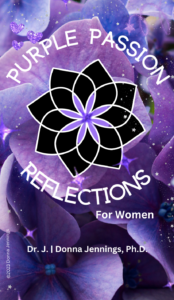Why Language Matters: Use Scenes with Sex to Shift Your Writing Perspective.

Why language matters? Welcome to my world of “scenes with sex,” not “sex scenes.”
Did you get it?
Do you see or know the distinction?
If not, welcome to the mind of a retired sex therapist, college professor of human sexuality, and current erotica and erotic romance writer and editor for Rosy. Join me on a sexual language journey where I replace sex scenes with scenes with sex.
Is it Potato, Potahtoe, or Tomato, Tomato?
You may be one of those who read the two phrases, scenes with sex and sex scenes, and said, “Meh, potato, potahto, it refers to the same thing.”
As an individual who is multi-lingual in sexuality, I have spent my professional life translating the ways people talk about sex, to be on the same page for education. Moving through kid language, slang language, colloquial language, and medical language to accurate and factual language has been an ongoing part of my life. That process has not changed since moving into the writing world.
Given my translation skills, I want to share why scenes with sex and sex scenes are not the same thing. To start, the phrasing of words tells us about the writer or speaker. Are we accurately describing the situation? Are we picking up phrases created at another time for a different purpose? Do we stop and consider that as a process of writing?
Language Creates Situations
We carry the language of sexuality from one place in time into another through words and sentence structure. Stopping to investigate allows us to consider how we use words and phrases and make new choices.
For me, I think this concept of words and sentence structure in sexuality took root long before I became a writer. After a high-profile domestic violence occurrence affected my college community, I played a TED Talk by Jackson Katz in my human sexuality course. He showed how we change narratives about language and victim blaming through the changing of words. This is his simple but powerful example.
John beat Mary. In writing, you will recognize an active voice.
Mary was beaten by John. In writing, this is passive voice, which changes our focus from John to Mary.
Mary was beaten. In this sentence, they deleted John, leaving Mary as the focal point.
Mary is a battered woman.
The resulting sentence ends this story. It is an identity for Mary, and John no longer exists as part of it. With this last shift, our culture stayed concerned with Mary’s actions, not John’s, and our lens changed the perspective of experiences and actions, all based on how the information was presented. It is a literal and figurative way sex has been whitewashed and dismissed just through words.
For writing, this shows the power of individual active words and what happens when we lean toward the passive voice. It is a tool. And one that, when understood for storytelling of sexuality, is powerful. We need to ask ourselves, are we accurately describing the situation? Are we picking up phrases created at another time for a different purpose? What is our intent in descriptors?
Defining a Scene
Let’s look at the word “scene.” Whether we talk about a play, film, or book, a scene refers to “where” events occur in a specific place and take place in a larger narrative.
I see this creation from several directions.
First, “sex scene” is a shortcut. Let me name it as quickly as possible and get on with it. I’ve heard the title was coined in film because there have been so many of these scenes in films. But that narrows the focus and has us looking at one event like it is the same every time or everyone.
Second, sex becomes the focus of the phrase.
People create a one-picture frame on this phrase. “Let’s write the ‘sex’ scene.” Like taking John out of the equation, this phrase takes all the people who are not heterosexual out of the equation. Sex scene is synonymous with penis-vagina intercourse or getting to it. How one chooses to express sex is based on personal makeup and specific wants, needs, and desires. There is so much more to sex than penis-vagina intercourse.
Ultimately, the phrase portrays the scene as insertable. We need to heat things up. Let’s put a sex scene here. It’s as if sex is not attached to the character. And sadly, that aspect of being disconnected from our sex plays out here.
People use sex scenes as a catch-all phrase. Society has adopted it, but it is not a nuanced use of the concept of sexuality within a play, film, or novel story. But I see it differently.
Framing Scenes with Sex
Overall, with scenes with sex, I’m employing a larger, fuller perspective of sexual activity. As a writer, I want readers to experience holistic characters, so using the physical, emotional, mental, and spiritual components of sexuality is described in solo or partnered sexual fun.
When I write a scene with sex, the scene could take place outdoors, in the back seat of a car, on the dining room table, against the wall, or in a spaceship. Notice I name the location where “sex” will occur. The location is the setting for the activities of sex, the scene. And that location can affect everything about sex, given the character’s sex history.
When I talk about the “sex” in scenes with sex, I mean the activities of sex that are based on the development of the characters and the story. Using character sex histories with their wants and needs. The activity could be anything within the sex world that moves character growth forward. The physical sex is on a continuum related to the character’s experiences of affection, intimacy, gender,
Sexuality is a component of the character, what they carry around daily, just like we authors do. Sex is a physical expression of sexuality. Scenes with sex broaden the scope and allow individual uniqueness to express sexuality with nuance and by design created within the characters. It moves us away from hetero-normative sex (penis-vagina intercourse) and into diversity and inclusivity.
Take Aways.
Using the phase sex scene is like pulling sex down from the shelf we store it on. We bring it down for special occasions, birthdays, and anniversaries. We don’t discuss it as an integral part of our life or feel good enough to discuss it openly. Are we choosing to go along because that’s the way it’s always been done, or do we work to elevate and integrate sexuality holistically into our characters and ourselves?
But with different framing, you can expand your scenes with sex processes. Your character can be a sexual being throughout the story. Tapping into this idea will help you create deeper, richer character developments and add three-dimensional qualities to the characters in your story. Scenes with Sex > sex scenes.
Stay in the know about my upcoming book: How to Write Scenes with Sex: A Writer’s Sexuality Guide. Signup for the newsletter.










Recent Comments